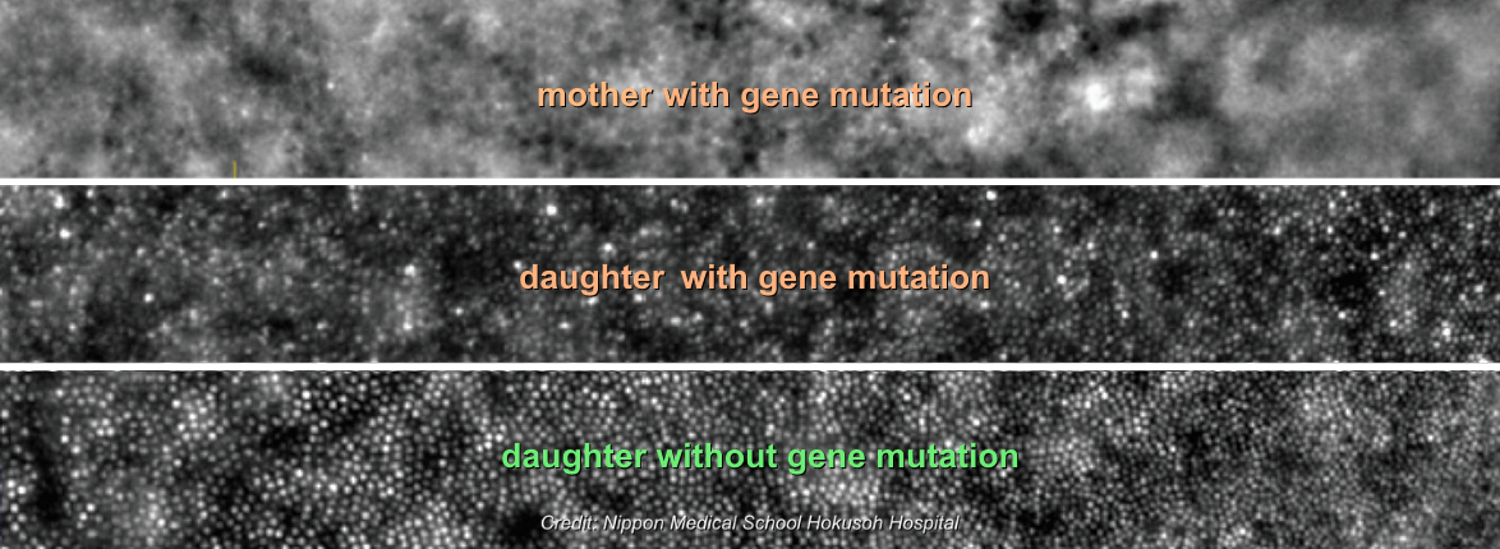Cellular-level phenotyping of retinitis pigmentosa with adaptive optics
Retinitis pigmentosa (RP) is a group of inherited retinal degenerations that involve multiple genes. A new study published in the Ophthalmic Genetics journal investigated the retinal phenotype associated with a rare mutation in the hexokinase 1 gene.
The authors, a team led by Prof. Shuhei Kameya at Nippon Medical School, used an rtx1™ Adaptive Optics Retinal Camera to examine photoreceptor cells in a family of patients. Adaptive optics images revealed a clear association between the gene mutation and losses in cone photoreceptors, even in the absence of visual symptoms.
“The disease progression is slow, and symptoms begin in the late 40s, although a reduction in the cone photoreceptor density begins in the teenage years” Dr. Daiki Kubota and co-authors, Nippon Medical School
In inherited retinal diseases, adaptive optics imaging is increasingly used for assessing cellular damage, which occurs years before other clinical manifestations.

To learn more about these new findings, click here to visit the journal website or here to contact Imagine Eyes.
Article reference : Kubota, D. et al. High-Resolution Photoreceptor Imaging Analysis of Patients with Autosomal Dominant Retinitis Pigmentosa (adRP) caused by HK1 mutation. Ophthalmic Genetics (2020) DOI:10.1080/13816810.2020.1810284